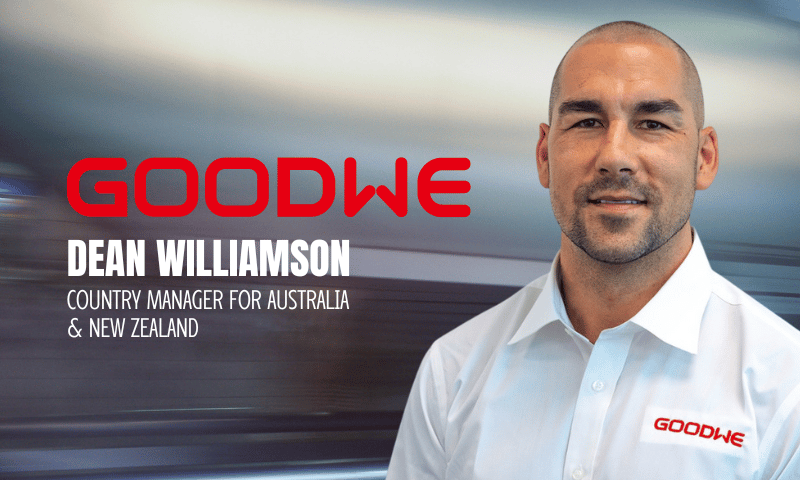GoodWe, a stalwart of the solar industry since 2010, has seen its impact and offerings go from strength to strength. Considered to be one of the best inverter manufacturers in the world, and taking home countless awards for excellence in quality, GoodWe is a name that can be trusted. They will soon be featured on Open Homes Australia Season 6 where they will showcase their inverter and battery storage solution.
Energy Matters is proud to have hosted GoodWe’s Country Manager for Australia and New Zealand, Dean Williamson, this morning via our podcast Road to Zero. We asked Dean to provide some insight into his journey with GoodWe.
Describe to us your journey to date in the solar/renewable energy industry
I started 12 years ago, working for a local retailer selling residential solar systems, I remember 5kW systems were almost unheard of, and they were being installed for around $25,000. I then moved to selling small commercial solar where 40kW systems were typically about $100,000.
In 2013, I became a Sales Manager for manufacturer Zeversolar, which was formed as a result of two manufacturers in China joining. I found the first 12 months challenging as one of the old brand names had a poor reputation in the industry and it took a while to rectify that.
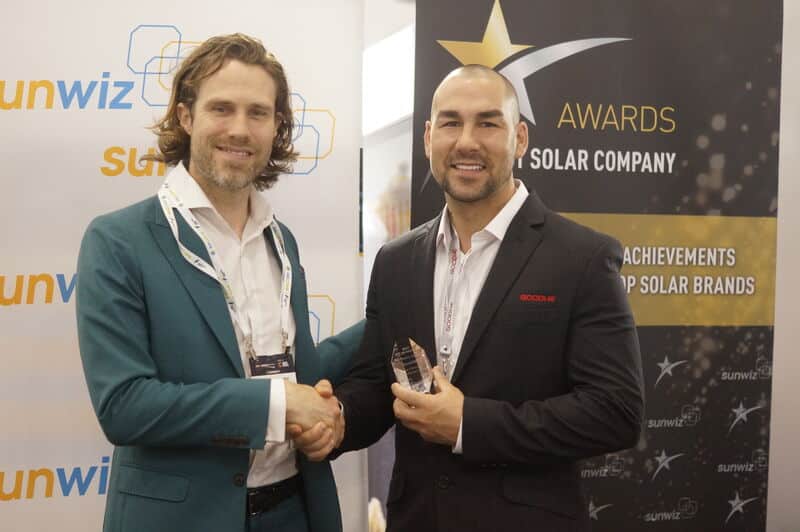
After 3 years, SMA acquired 100% of Zeversolar and a lot of functions for Zeversolar and SMA merged, including sales. So, I became an SMA employee, as Account Manager looking after the distribution network for both brands.
Then in 2019 I joined GoodWe as the Country Manager for Australia and New Zealand.
Why did you choose to work for Goodwe?
When speaking with GoodWe, I saw that they understood, and saw the importance of, meeting the needs of the local market. I also saw a lot of potential and opportunity for growth and, from speaking with installers, I saw the product had proven to be reliable. I also saw potential to work with our HQ and be influential to improve and grow the brand in the region, by also establishing a local team.
After establishing a distribution network, I bolstered the local service team, then established local marketing and HR departments, as well as boosting our sales and service team.
I am proud of the fact that we have the ability to develop a product specifically for our local market, working with HQ, and doing so very quickly when we see patterns or trends in local market. One of our strengths is speed to market to meet demand.

Our customers are always looking for ‘new’ and ‘cutting edge’ technology. Is there anything in the pipeline for GoodWe that will take your offerings to the next level?
GoodWe boasts an R&D department of over 700 staff, which helps to show why we have the largest range of inverters in the solar industry, covering both the GoodWe and GE branded product ranges.
The team are continually developing products to make improvements that not only help the end consumer, but also installers – making products more compact, lighter and easier to install, with simple commissioning features.
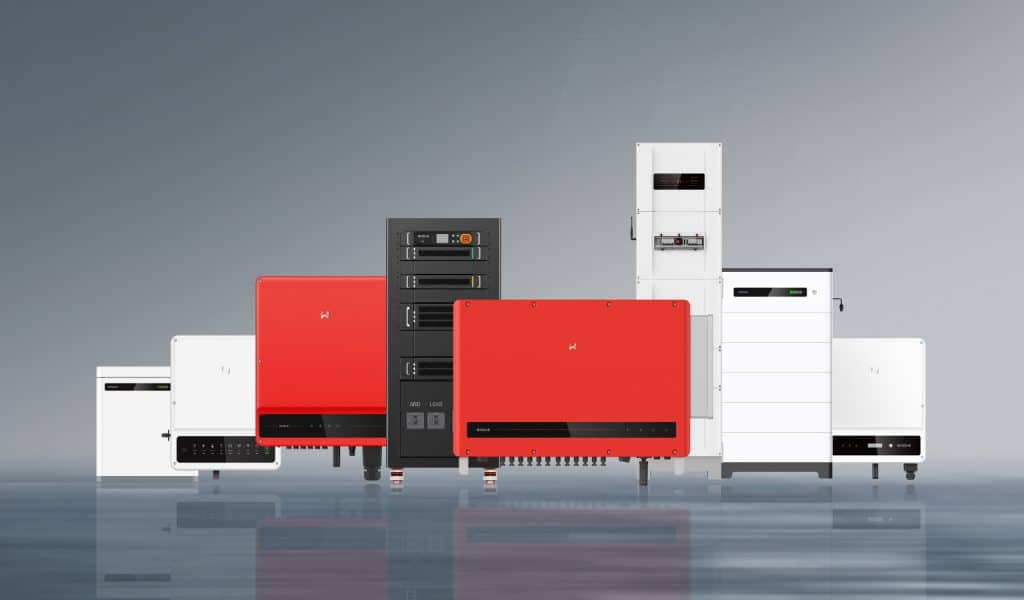
With regards to new technology, we will be releasing an EV charger early next year, and we also have our “Sunshine” BIPV solar roof tile system for the new-build market. All of which go towards a complete system solution that we call “Eco Smart Home”. We heavily invested in BIPV, and we also developing a lightweight flexible panel system for commercial buildings where rooftops are very limited on weight.
We are also developing commercial-scale storage systems which is a growing market in Australia.
We are always looking to add value to our customers, so we have just launched integration with the Solar Analytics monitoring platform for both GE and GoodWe brands.
Do you have a favourite or go-to GoodWe product? What sets this product apart?
ES G2 – our brand new, low-voltage hybrid inverter, which has a lot of benefits from the previous first-generation model.
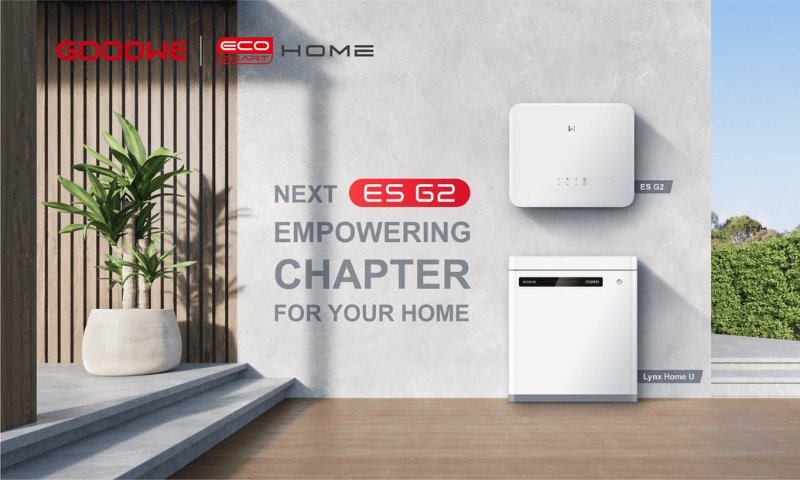
Why did you choose to get involved in Open Homes Australia?
In April we launched a roadshow truck, which we have dubbed the “smart Innovation vehicle”, the first of its kind in Australia, and over the past year we have been touring Australia, taking part in consumer events. We have found that consumers are doing a lot of homework now on solar and, in particular, energy storage, with an eye on the future and the phasing out of fossil fuels, and especially the higher energy bills. Homeowners now want the best system solution for them and we believe that our products offer that.
We chose to get involved with Open Homes because we want to continue to help provide that knowledge and help keep consumers informed as to how GoodWe and GE branded products can provide energy independence, lower bills and keep essential loads powered during a blackout. This is a continuation of our marketing strategy, to build consumer awareness about our brand.
To have this platform on such a high-quality, reputable show in Open Homes, is something we are very excited about!
Tell us in a little more detail about the products you will you be showcasing on the show?
We will be taking you to a large, new build home in Victoria, to showcase an energy storage system that comprises of 2x GE hybrid high voltage inverters, coupled with our GoodWe Lynx F high voltage batteries on a dual-phase system.
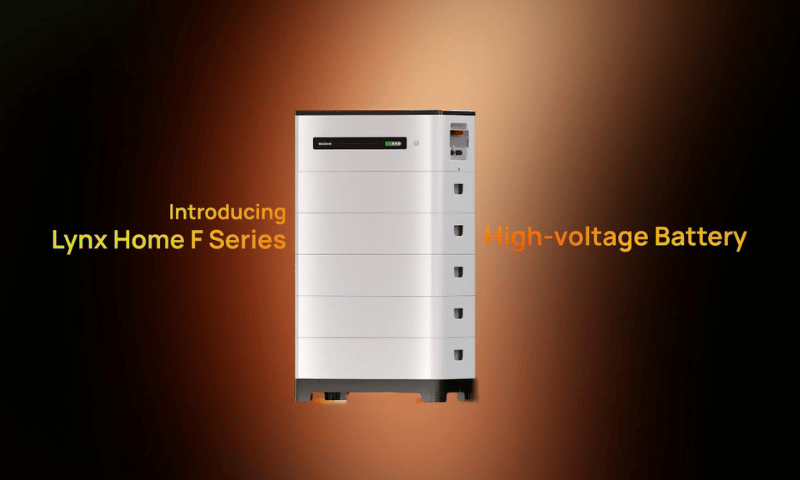
The GEH hybrid inverter is a dedicated model as part of our GE range of premium inverters – it is the largest inverter of its kind on the market and includes some amazing features such as a built-in breaker box for a neater installation, a built-in bypass switch, 4 MPPTs so that up to 4 strings of solar panels can be linked to the one inverter, making it perfect for larger properties and complex rooftops. It also has a “Smart Shadow Scan” feature which is a learning algorithm that monitors and optimises the performance of the solar panels in occurrences of shading throughout each day.
In addition, the owner also benefits from a FREE 12-month subscription to Solar Analytics, which is a fantastic benefit exclusive to the GE brand. Solar Analytics is a consumer-friendly monitoring platform that is installed with one simple click through the GE monitoring tool. It provides incredible monitoring and reporting of a system, showing performance, energy usage, any alarms or notifications, plus it also learns how energy is used on the system and shows options for switching to other electricity providers to show potential further savings on energy bills – potentially thousands of dollars each year.
We will also have our EV charger installed. The size of the average residential system is now increasing, it used to be around 6.6kW and we are now seeing that 8kW-10kW is the norm, as homeowners try to maximise their roof space to generate and store as much energy as possible. The EV market is growing at a massive rate in Australia, so it only makes sense to future-proof solar and energy storage systems so that electric cars can be charged at home, using the energy generated.
What changes would you like to see in the industry to better provide consumers confidence that renewables are a viable alternative to fossil fuel reliant technology?
More rebate options for energy storage and electric vehicles in all States, standard rooftop solar is proven for ROI, but more education and clarity on energy storage to increase the uptake of batteries. Batteries also have a lot of benefits to help grid stabilisation and at times of peak demand like we see in South Australia, to have the ability to draw energy from consumers batteries to help provide stability for the electricity grid.
More clarity and transparency on the options and processes of installing new systems, upgrading and increasing older ones (something becoming very frequent in recent years), and guidelines to show if energy storage is right for the user – because in some cases it isn’t the best course of action.
More guidance on avoiding bad installation companies and what to ensure so that a safe and quality system is installed. Also, more focus on the future of EVs and what is being done to improve infrastructure on charging and using EVs. More education and incentives are needed.
Australians are known for their early adoption and high uptake of solar. This means that there are many Aussie rooftops with aging, outdated, and inefficient PV systems. What message would you like to send to those that are not sure if they should invest in an upgrade?
Most older systems were placed on a high feed-in tariff, which have now dropped significantly. As a result, most of those are now experiencing higher bills as those systems were typically a lot smaller of modern ones, which don’t meet demand of their energy uses using older, less efficient technology.
Our advice is to hang on to high feed-in tariffs if you still have them – hang on to it until it runs out, before looking at making changes to your system. In most cases, it is best to upgrade depending on how old your system is, with a few possible solutions depending on circumstances. A reputable installer will be able to assess, guide and provide costings on the best long-term options and best use of investment.
Looking to go solar? Get up to 3 FREE solar quotes for a system with a GoodWe inverter and a battery today!











